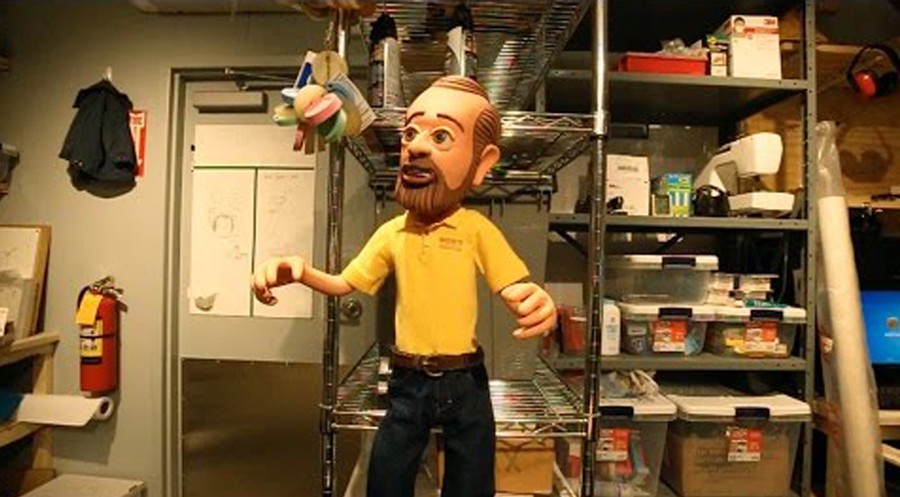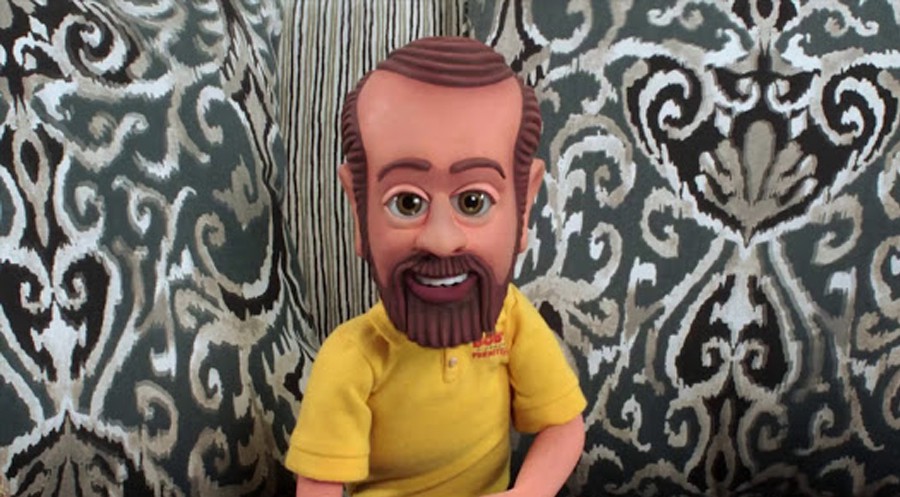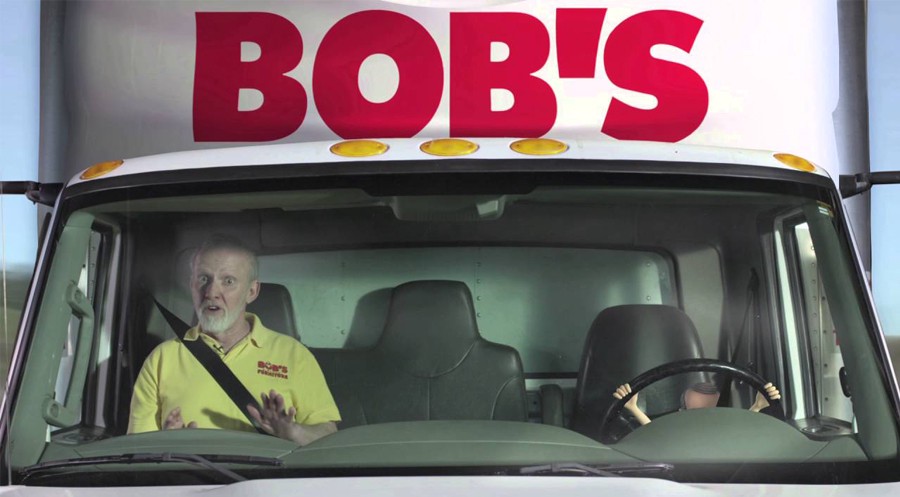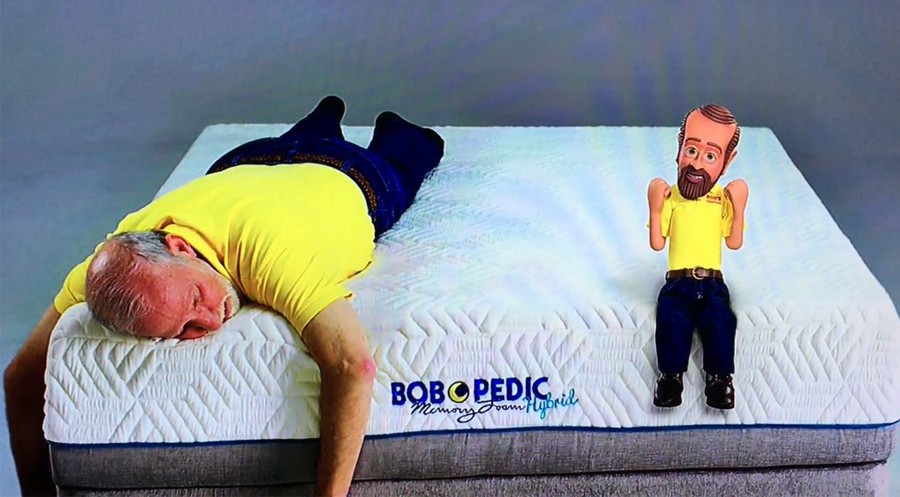If you?re a resident of the Northeast through the Midwest of these United States, odds are you?re familiar with Bob?s Discount Furniture, a chain of stores that sells furniture, at a discount. And if you?re a network television consumer, similar odds are you?ve seen a barrage of ads detailing the discounts at which said furniture is sold.
Bob?s Discount Furniture is known for its offbeat and comical ads. In the ads, a casual Bob Kaufman (the company?s co-founder, president emeritus, and spokesman) dressed in jeans and a polo shirt will highlight recent additions to their furniture offering and how a customer can save by choosing Bob?s. Many of the ads are in good fun and seem innocuous enough, but?
For years now there has been one unsettling force in the advertising Bobiverse: Little Bob. A smaller version of Bob, Little Bob appears in many of the company?s ads, often without context, leaving many viewers both confused and imbued with a sense of fear and disgust. What is Little Bob? Where did he come from? After many of my all-caps tweets and emails to the company have gone unanswered, I?ve been forced to speculate. What follows is the top 5 most plausible theories as to what Little Bob is, ordered from most to least likely.

1. Little Bob is a Puppet Cursed to Life
In the ads, Little Bob is clearly not being moved by strings, nor does he have an arm up his back like a traditional puppet. The only possible conclusion based on these facts is that yes, Little Bob was once a puppet, but was cursed to life by an itinerant magician. The reasons for puppet Little Bob?s animation are unclear. Perhaps Bob himself transferred his soul into Little Bob in exchange for immortality, though until Bob dies, or definitively outlives us all, we?ll never know.
The closest analog to Little Bob is, of course, Pinocchio, an equally dishonest and roguish puppet brought to life to serve as a cautionary tale for awful children. But, this theory begs even more questions than it provides answers. Is Bob some ghastly Geppetto figure? If not, who created Little Bob?

2. Little Bob is a Failed Bob Clone
Look, Bob?s Discount Furniture is worth $1 billion in annual revenue. I?m not an expert on corporate finance, but I assume almost all of that goes to Bob every year. With a net worth of presumably $26 billion (Bob?s was founded in 1991), Bob Kaufman has a lot of disposable income to invest in experimental technologies and procedures. One of those technologies is more than likely cloning.
In the years that Bob has been cloning himself, there were bound to be some test cases and failures. For every 2?3 Bobs that exist in the world there were probably those with horrifying deformities that had to be destroyed on sight, for fear that they might invoke the wrath of a jealous God. Within that set of aberrations, there were also likely some that were close enough to be spared. One of those was Little Bob who, while still an affront to God, is merely a smaller version of Bob with similar (though perhaps beyond?) cognitive capacity. Bob took this clone as an ersatz son, raising him as a successor to him in his business.

3. Little Bob is a Time-Traveling Bob as a Child
Anyone who knows anything about Bob Kaufman knows that he?s had the appearance of a 69-year-old man since he was an infant. As Bob aged, he simply grew taller, though his facial features, body proportions and hair remained exactly the same. The only difference is that Bob was born with both sets of teeth, baby and adult, the former of which were shed before he was 2. So, when you see Little Bob, you?re actually looking at a mirror image of Bob, aged roughly 3 years.
I don?t need to explain the validity of theories surrounding time travel and the existence of alternate timelines anymore than you need to read them. Which is why it should come as no surprise that Little Bob is in fact Bob as a child who has catapulted through time to our present day. Whether through a wormhole or an actual time machine remains unknown (and is mostly irrelevant). Why he?s here is the bigger question: has he come to warn Bob of something? Has he come to warn us all of something?

4. Little Bob is the Physical Manifestation of Bob?s Id
Now, while Little Bob being a time traveling child Bob is one explanation, the overarching implication of Little Bob is childhood. Little Bob may not be Bob as a child, but he represents the pure force of id that childhood represents. Little Bob lives without consequence, and as such moves through a world without limitations. How Little Bob as id manifested remains unclear: Bob could have been cursed by the magician mentioned earlier in this post. Bob is, in all likelihood, subject to the realities of our world: Death, embarrassment, legal ramifications, etc. Little Bob doesn?t face any of these constraints, and serves as a functional avatar for Bob?s instinctual, pleasure-seeking brain. Where that id has led Little Bob is subject to horrible speculation.

5. Little Bob is Death, Forever Stalking Bob
For how little Little Bob is, he casts a pall and a shadow over everything in his presence: advertisements, furniture, and Bob himself. It?s not out of the realm of possibility that Little Bob is Death, trailing behind Bob everywhere he goes as a constant reminder of fleeting mortality. Did Bob make some sort of Faustian bargain to earn his echelon of success? Whatever he did, he unleashed Little Bob on himself, and on our screens, and for that he should never be forgiven.
Join us next week where we?ll discuss the warped sexual politics of Duke, the BUSH?S Baked Beans Dog/recipe cuck.


